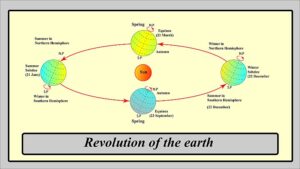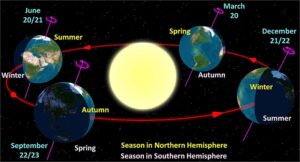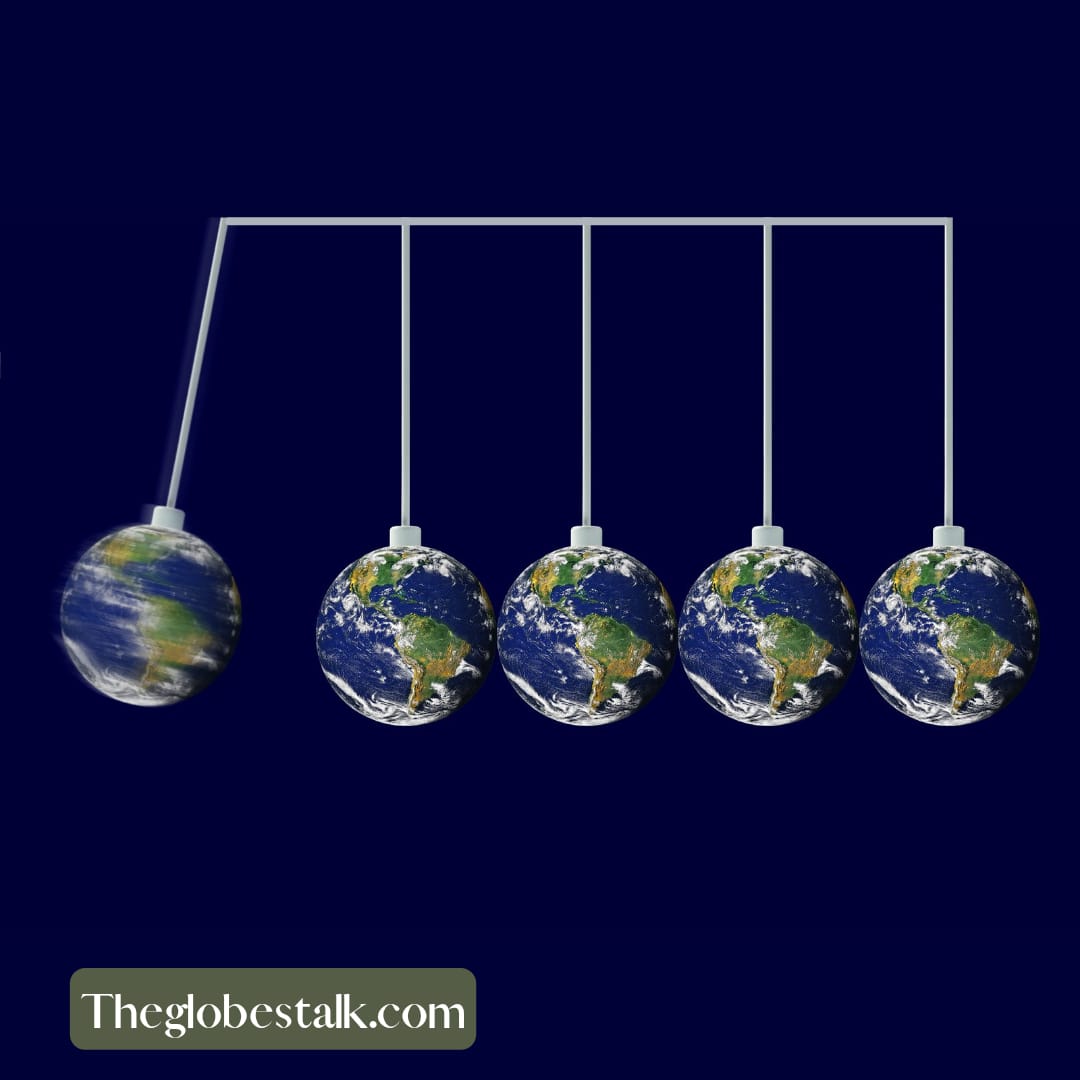We all move from one place to another! How would the Earth move around? What would be the movements of Earth? How does the earth move? Stay calm and we would answer all your questions below.
Everything around is in motion or moves. The Earth also moves continuously in space, around the Sun and also on its axis. These motions of the Earth lead to several phenomena like the day and nights, the different seasons, different climates in different parts of the world.
There are two main types of motions of the Earth. They are:
Rotation–
Movement around its axis
Revolution–
Movement around the Sun
What is Rotation – the 1st Motion of Earth?
The imaginary line passing through the North Pole and the South Pole that goes through the centre of the Earth is called the axis of Earth. The earth spins around the axis in the same way as a top spins. This spinning motion of the Earth around its axis is known as the Rotation. The plane formed by the orbit is called the Orbital plane. The axis and the orbital plane make an angle of 66.5o.
The Earth is spherical in shape due to which only half of the Earth receives sun rays at a time. The portion of Earth facing the Sun and receiving sunrays experiences day time and the half away from Sun and not receiving sunrays is in night time. The Earth spins on the axis from West to East. The circle which divides the day and night on the globe is known as the Circle of Illumination. However, this circle is different from the axis of rotation.
The duration of a day on Earth
We know that a day on Earth is of 24 hours. This is the time taken by the Earth to complete one rotation about its axis. However, an observer in space will see that Earth completes one rotation in 23 hours, 56 minutes and 4 seconds.
To reach the same place relative to the Sun, the Earth must turn more because the Earth moves around the Sun as well while rotating. Thus, the duration of a day is 24 hours on Earth. This period of rotation is called earthday and is the daily motion of the planet.
A question arises that what would happen if Earth didn’t rotate?
If there was no rotation of Earth, the part of Earth facing the Sun would always face it. This means it would experience a day every time. It would receive continuous light and warmth from the Sun. The other part of the Earth, wouldn’t receive any sun rays and thus would be freezing cold. There would be complete darkness. Life would not be possible in such conditions.
Know about Revolution –

The 2nd Motion of Earth, revolution is the movement of the Earth around the Sun in fixed paths called orbits. The gravitational pull of the Sun keeps Earth and other planets in their orbits. The orbit of Earth is an ellipse so the planet is sometimes closer to the Sun and farther to the Sun at some other time. The Earth is at an average distance of 150 million kilometres from the Sun.
The Earth takes 365.25 days to complete one revolution around the Sun and We ignore the .25 part or six hours and keep 365 days as one solar year on Earth.
Leap Year –
The six hours that we ignore from the time of one revolution gets added up every year. Thus, it makes up 24 hours in 4 years and one day gets added up in the year. This day is added in February making it a 29-day month. This type of year consists of 366 days instead of 365 days and is called a Leap year. The next leap year would be in 2024.
How do seasons take place?

A year normally has four seasons – summer, spring, summer and autumn. Ever thought about why and how these seasons occur? The different seasons are experienced due to the different positions of Earth around the Sun.
The Earth has different positions around the Sun because of its titled nature and revolution around the Sun. Different parts of the Earth receive varied amounts of sunrays as the Earth revolves around the Sun. Thus, the part of the planet tilted more towards the sun experiences longer days and has warmer temperatures.
Throughout the year while revolution, different parts are tilted towards the Sun, which leads to Solstices and Equinoxes.
Summer Solstice:-
On 21st June, the Northern Hemisphere is towards the Sun and thus the Tropic of Cancer receives direct sun rays on it. As a result, these areas are hotter while the poles and areas near them receive less heat as the rays are slanting. The North Pole is inclined towards the Sun and the regions beyond Arctic Circle face continuous daylight for nearly six months.
As the Northern Hemisphere is getting sunlight, these regions north of the equator experience summer. On 21st June, these places experience the largest day and shortest night.
At the same time, places in the Southern Hemisphere have all the opposite conditions and experience the winter season. Therefore, the nights are longer than the days. The position of the Earth is known as the Summer Solstice.
Winter Solstice
In the same way on 22nd December, the Tropic of Capricorn in the Southern Hemisphere receives direct sun rays as the South Pole is titled towards the Sun. Due to this tilt, the Southern Hemisphere gets a larger portion of sunlight and has longer days and smaller nights. This means the Southern Hemisphere experiences the summer season. While the Northern Hemisphere has the opposite conditions and has a winter season. This position of the Earth is the Winter Solstice.
Equinoxes:-
On certain dates, the direct sun rays fall on the equator. These dates are on 21st March and 23rd September. In this situation, none of the two poles is tilted towards the Sun and thus the whole Earth experiences equal days and nights that is, 12 hours of day and 12 hours of night. This is called the Equinox.
On 21st March, it is spring in the Northern Hemisphere and autumn in the Southern Hemisphere while on 23rd September, the Northern Hemisphere experiences autumn season and spring season in the Southern Hemisphere.
Thus, we get to know that all the changes in day and night and different seasons are all because of the motions of Earth, namely Rotation and Revolution.
So, if you have read this completely, you would know about the different motions of Earth and their effects.
